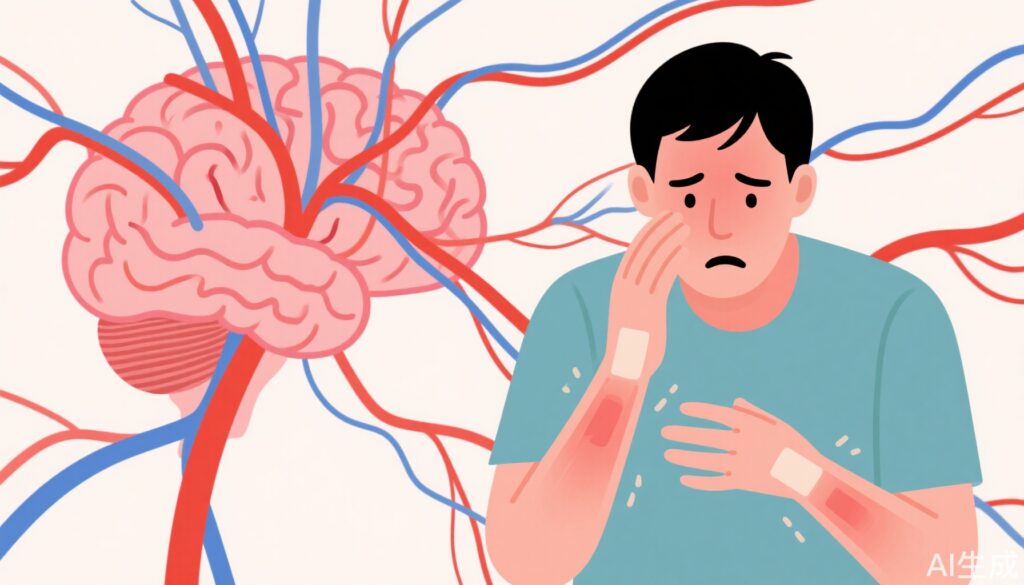Introduction
Stroke, particularly ischemic stroke or brain infarction, is a leading cause of death worldwide, claiming approximately 2 million lives annually. Although it is more common among adults aged 45 to 70, recent trends show increasing incidence in younger populations. Understanding early warning signs and prevention methods is crucial to reducing its impact.
What Is Brain Infarction?
Brain infarction, medically known as cerebral infarction or ischemic stroke, occurs when blood flow to part of the brain is obstructed, typically due to a blocked artery. This blockage causes insufficient oxygen and nutrient delivery, leading to the death of brain tissue and subsequent neurological deficits. It is the most common type of stroke and is often referred to as cerebral ischemia or brain thrombosis.
Key Early Symptoms to Watch For
Stroke often presents early warning signs that, if recognized promptly, can lead to timely intervention and reduce brain damage.
1. Numbness or Stiffness of the Tongue
A healthy tongue is soft, flexible, and supports clear speech. Sudden numbness or stiffness at the base of the tongue, slurred or unclear speech, and difficulty articulating words may indicate insufficient blood supply affecting the brain’s language center. Additionally, frequent choking when drinking water or eating can also be signs of tongue stiffness related to stroke risk.
2. Numbness on One Side of the Body
Since strokes usually affect one hemisphere of the brain, sudden numbness or weakness in one arm or leg, unstable walking, or difficulty performing fine motor tasks such as holding a cup steadily or using chopsticks may indicate a stroke. Immediate medical evaluation is essential.
Other Warning Signs
Additional symptoms that may signal an impending stroke include:
– Abnormal blood pressure readings
– Sudden severe headache accompanied by seizures
– Sudden vision loss or blacking out in one eye
– Vertigo or dizziness
– Temporary vision disturbances
– Facial drooping or asymmetry
Recognizing these signs early and calling emergency services immediately can save lives and improve outcomes by allowing timely treatments such as anticoagulation, thrombolysis, or thrombectomy.
Five Simple Exercises to Help Prevent Stroke
Incorporating these exercises into daily routines can promote vascular health and reduce stroke risk.
1. Neck Massage
Massage the sides of the neck to relax smooth muscles in the blood vessels, reduce cholesterol deposits, restore arterial elasticity, and improve cerebral blood flow. Rub your hands together until warm, then massage the left and right sides of the neck briskly until the skin feels warm and slightly reddened.
2. Head Rotation
Gently rotate the head from left to right and back, forming an arc shape. This movement increases the resistance capacity of blood vessels, helping to prevent brain infarction. Perform 10 sets daily, moving slowly to avoid strain.
3. Wrist Rotation
Rotate both wrists simultaneously: 50 rotations outward followed by 50 rotations inward. This helps alleviate hand numbness and relaxes the wrist muscles. Move slowly with moderate range to prevent injury.
4. Shoulder Shrugs
Raise and lower both shoulders to relax nerves, blood vessels, and muscles in the shoulder area, ensuring adequate oxygen and blood supply to the brain. Perform this exercise for 5 minutes each morning and evening.
5. Air Grasping with Hands
Frequent exercise of the left hand stimulates the right brain hemisphere and helps strengthen fragile blood vessels. Perform 3 sets of air grasping motions with each hand, completing 400 to 800 repetitions per set.
Dietary Recommendations for Stroke Prevention
Diet plays a vital role in stroke risk management.
Low Salt, Low Sodium, and High Potassium Diet
The World Health Organization recommends limiting daily salt intake to under 5 grams. Be mindful of hidden salts in sweets, processed foods, fast food, and seasonings. Foods rich in potassium—such as fresh leafy greens, mushrooms, and fruits like oranges and bananas—help promote sodium excretion and reduce blood pressure.
Folic Acid Supplementation
High homocysteine levels are a known stroke risk factor. Supplementing with folic acid, alone or combined with vitamins B6 and B12, has been shown to reduce stroke risk and is part of China’s 2021 primary stroke prevention guidelines.
Increasing Unsaturated Fatty Acids
Unsaturated fats, including monounsaturated and polyunsaturated fatty acids, act as vascular cleaners by removing harmful cholesterol and preventing atherosclerosis. Sources include olive oil, peanut oil, canola oil, nuts (especially walnuts), and fish such as sea turtles and deep-sea varieties.
Nattokinase or Low-Dose Aspirin Supplementation
These agents inhibit platelet aggregation, reducing stroke risk. Long-term use may also confer protection against certain cancers and other diseases but should be taken under medical supervision.
Conclusion
Brain infarction can affect individuals at any age, making vigilance vital. Regular health check-ups and early detection of symptoms enable timely treatment, significantly improving prognosis. Adopting preventive exercises and healthy eating habits further safeguards against stroke, promoting a healthier life.



